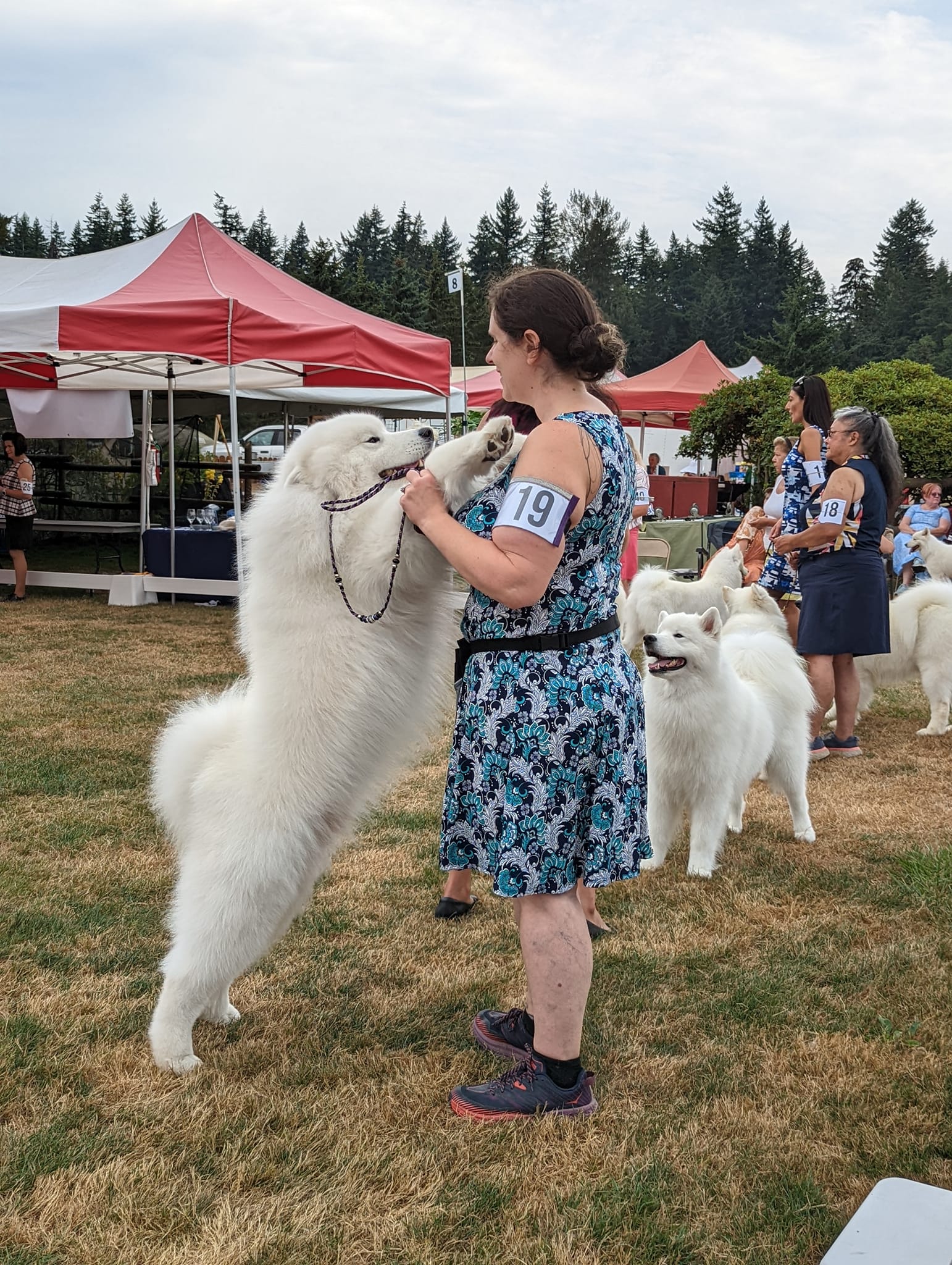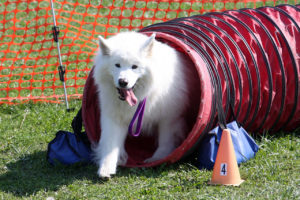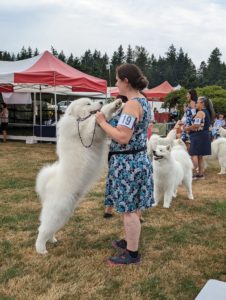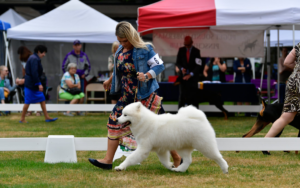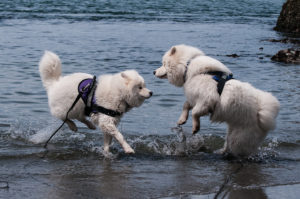Body Language Matters
Body Language Matters!
“It’s not what you say but how you say it!”
Q: I’ve been taking my dog to obedience classes but I’m still having problems getting him to understand what I want him to do. My instructor says I’m not using the right tone of voice or body language but I don’t know what she means. Can you help me?
A: Since dogs don’t talk, spoken language isn’t as important to them as it is to people. While they can learn what certain words mean, dogs understand non-verbal signals like tone of voice, gestures and posture better than they understand words.
For example, get your dog’s attention and then, in a happy voice, call him to you using a different command than he’s used to and a different name than his own. If his name is Barney, say “Over here, Fred!” Guess what? Even if he’s never heard those words before, he’ll still come because he recognizes the inviting tone of voice you always use when you want him to come.
Dogs are also very sensitive to facial expressions and eye contact. He knows that a smile means you’re happy and a scowl means you’re not. Here’s another example: Using that same cheerful voice combined with a big smile, tell him that he’s a terrible, awful, miserable dog and that you’re really mad at him. What does he do? Instead of cowering in shame, he wiggles, wags and wants to kiss you! Why? Because you’re talking to him in the same tone that you normally use to praise him. He doesn’t care what words you use – it’s your happy attitude that he’s responding to.
Dogs pay attention to your posture, too. Crouching to the dog’s level invites them to come or play. Standing straight with your shoulders back is a more commanding posture and tells the dog you are someone to be respected.
Dogs become very confused when their owners’ words, expressions and tones don’t match. If you were to crouch down and call your dog using a happy voice but with a frown on your face and a stern look in your eye, he wouldn’t know what to do! Is he supposed to come or are you mad at him? If he does come, he’ll probably do it fearfully since frowns and stern eyes usually mean something unpleasant is in store! Since your signals are mixed, he can only guess at what you want or what will happen to him.
Many owners give commands in a questioning tone: “Barney, sit?” This tells the dog you’re not sure of yourself and don’t know exactly what you want him to do. If you don’t know, he won’t either! Others draw the word out into something that sounds soothing, sinister and questioning at the same time: “Barney, siiiiit?” The poor dog doesn’t know what in the world you’re trying to get across and might not respond at all!
To be most effective when training and communicating with your dog, your expression, eyes and tone of voice all must say the same thing. You need to use different expressions and tones for different situations and keep those signals consistent. When you tell your dog to do something, use a low-toned, firm, matter of fact voice. “Barney, sit!” Your facial expression should be neutral, neither smiling nor frowning, you should be standing up straight and your eyes should say “Do it!” This is as clear to the dog as it gets – he sees that you expect him to do as he’s told and if he understands the command, he will do it.
If he obeys, give him a huge smile and praise with a happy, cheerful voice. Let him know exactly how pleased you are with him. If he didn’t obey, give him a dirty look and drop your voice as low as you can to deliver a short but totally unmistakable “no.”
Vicki DeGruy
Copyright 2002
by Canis Major Publications. All rights reserved. Used by permission.


